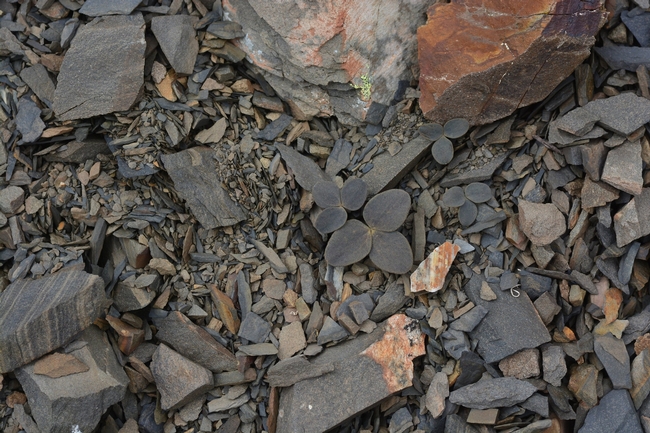- (Public Value) UCANR: Protecting California's natural resources
- Author: Janet Hartin
Welcome to Fall!
It's my favorite season and likely for many of you, as well. Beyond the holidays and extra time with family and friends, nature radiates its beautiful hues. In addition to lovely foliage, deciduous trees often expose exquisitely shaped and sturdy trunks. And, of course, there is the lovely fall foliage showcased by many species.
Did you ever wonder why trees "turn" color in the fall? The short answer: It's primarily a function of long, cool fall nights and short, sunny days. The longer answer? Chlorophyll is responsible for the basic green color of leaves we see in spring and summer and is a necessary component of photosynthesis, which uses sunlight to manufacture sugar (food) that is stored during the dormant period of the year. Carotenoids produce yellow, orange and even brown pigments in crops such as carrots, squash, bananas and many ornamental plants such as daffodils and poppies. Anthocyanins are red and orange in color and are most linked to lavish displays of brilliant fall foliage. They also give rise to coloring of strawberries, plums and cherries.
Here's the kicker: While chlorophyll and carotenoids are present in leaf cell chloroplasts throughout the entire growing season, during fall chlorophyll begins to break down. Voila! The lovely yellow and orange hues we all look forward to seeing are finally exposed. In addition, red hues (called anthocyanins) are produced in fall. So, in reality foliage doesn't "turn" orange or red at all.
Interestingly, the actual timing of color change varies across species and appears to be genetically inherited. The same species will exhibit a similar color scheme in cool temperatures in higher elevations at nearly the same time as it does in warmer lower elevation climates.
The intensity of color can vary quite a bit however. Where do temperatures enter the picture? Both the amount of color and the overall intensity of fall color is very linked to weather conditions that occur prior to and during the actual time the chlorophyll in leaves winds down. The most brilliant displays occur after several warm, sunny days and cool, crisp (above freezing) nights. This is because although lots of sugars are made in leaves during sunny daytime hours, the corresponding cool nights prevent the sugars from moving out. The amount of soil moisture also helps ensure that from year to year fall colors vary even in the same trees. So, either a late spring or a prolonged drought can both delay the display of fall color by a few days or even a few weeks.
What's the recipe for the most brilliant fall display? Most likely a warm, moist spring followed by a warm summer and sunny fall with cool autumn nights. Although fall color is not nearly as spectacular in lower elevations of Southern California compared to other colder areas of the nation, the liquidambar or American sweet gum (Liquidambar styraciflua) offers some pretty impressive fall color and an impressive 300 to 400-year life span. (Did you know that liquidambar got its name because it at one time was a sought-after chewing gum for Native Americans?)
Two “climate-ready” tree species with lovely fall foliage that grow in both the west portion of the county and the desert are the ‘Keith Davey' Pistache, a large street and park tree sporting crimson to scarlet colored foliage and its relative, the ‘Red Push' Pistache, a hybrid between P. atlántica x P. integerrima) which has lovely red foliage as it emerges in Spring as well as Fall. Others include the Raywood Ash (Fraxinus oxycarpa 'Raywood') sporting a reddish-purple hue in the fall, and the ‘Sunburst' Locust (Gleditsia triacanthos var. inermis 'Sunburst') which offers a vivid display of fall color. Unfortunately, it is susceptible to the Invasive Shot-Hole Borer. If you have one of these lovely trees already, take good care of it to help it stand up to this aggressive pest!
Happy Fall! Enjoy the cooler weather, family and friends, and lovely trees!
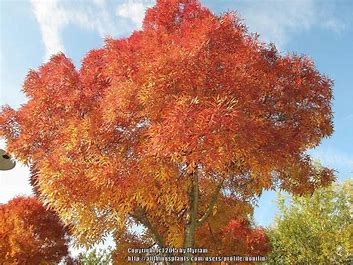
- Author: Janet Hartin
What do Fritillaria devlavayi plants and chameleons have in common? Think evolution and ensuring their survival for years to come. If you thought about their ability to camouflage themselves, you're right!
Plants have a will to live similar to humans and other animals. Besides changing colors, some plants have changed their shapes and patterns over many thousands of years to blend in with their environments. What is a newly discovered twist is that researchers in China determined that humans have also influenced the camouflaging of plants. Yang Niu, Martin Stevens, and Hang Sun published a paper in Current Biology on this topic. 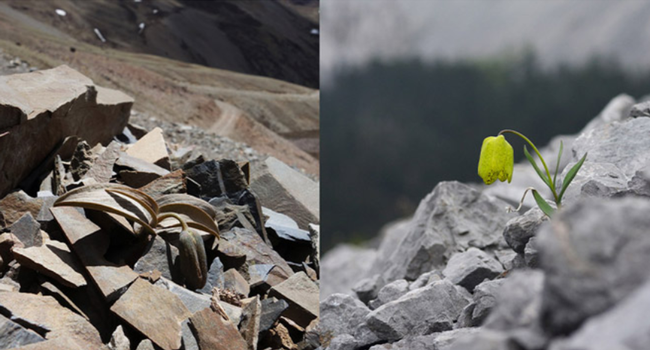
Why? Fritillaria made this adaptation to protect it from extinction by “hunters” whose goal was to harvest it. Rocky areas are more porous and loose, lending themselves to easier plant collection. Fritillaria has no known natural enemies leading researchers to surmise that human harvesting resulted in the camouflaging adaptation.
Photo credit for all pictures: Yang Niu.
Can you find the Corydalis hemidicentra?
This isn't an outrageous claim at all. Humans are known to have exerted strong selection pressure on some animal traits, resulting in unintentional evolutionary changes. Examples include bighorn sheep having smaller horns than they used to, keeping trophy hunters at bay allowing the bighorn sheep to survive. In other research, a group of UC Santa Barbara scientists led by Dr. Scott Hodges, an ecology professor, hypothesized that columbine flower color has evolved in North America as a survival mechanism. While red columbines are pollinated by hummingbirds, white and yellow ones are pollinated by hawkmoths. Over time, this color change occurred five times. In this mutually beneficial arrangement, flora and fauna both stand to gain! Score one for natural selection. See if you can spot the hidden plant (Corydalis hemidicentra).
The next time you're out in nature take a close look around you. You may see something you never noticed before in your own neighborhood or gain a fresh perspective on the wonders of plants and nature.
- Author: Janet Hartin
University of California Cooperative Extension Drought Resources To Keep Your Plants Alive
"Trees Come First Under Drought and Water Restrictions"
Keeping Plants Alive Under Drought and Water Restrictions (English) https://anrcatalog.ucanr.edu/pdf/8553.pdf
Keeping Plants Alive Under Drought and Water Restrictions (Spanish) https://anrcatalog.ucanr.edu/pdf/8628.pdf
Prioritizing Trees During Drought and Water Restrictions (5 minute Youtube)
https://www.youtube.com/watch?v=CTKLlJgdLVk
Tips to Keep Your Landscape Trees Alive Under Drought https://ucanr.edu/b/~IjC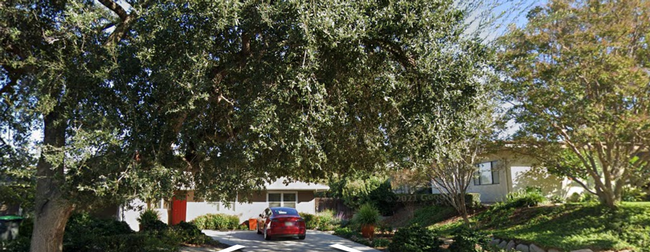
Landscape Tree Irrigation to Maximize Tree Health, Benefits, and Beauty https://ucanr.edu/b/~YjA
Landscape Tree Irrigation 101 https://ucanr.edu/b/~UjA
Top 10 Ways to Conserve Water in Your Landscape and Garden https://ucanr.edu/b/~tTD
Asphalt and Synthetic Turf are Superheating our Cities (in Desert Sun newspaper) https://www.desertsun.com/story/opinion/contributors/valley-voice/2022/04/09/coachella-valleys-asphalt-synthetic-lawn-heat-islands-reach-170/9515857002/
Use of Graywater in Urban Landscapes in California https://anrcatalog.ucanr.edu/pdf/8536.pdf
Need More Help? Speak to a UC Cooperative Extension Master Gardener in Your County of Residence. 
- Author: Janet Hartin
1. Select drought-resistant plants that grow well in your climate zone and microclimate (sun, shade, etc.). Try these search engines:
SelecTree: A Tree Selection Guide (calpoly.edu) Plant Search Database
Plant Search Database - Water Use Classification of Landscape Species (WUCOLS IV) (ucanr.edu)
For inland San Bernardino County: Home - Inland Valley Garden Planner
2. ‘Hydrozone': Place plants with similar water needs (very low, low, medium, high) together and water the hydrozones on different valves (or, if hand watering, water plants requiring the most water longer but not necessarily more often than other plants).
3. Make sure your irrigation system is operating properly (pressure, spacing, no weeds around heads, no broken parts, etc.).
4. Irrigate based on species and seasonal water needs (highest in summer) and soil type (sandy loam, clay loam, etc.).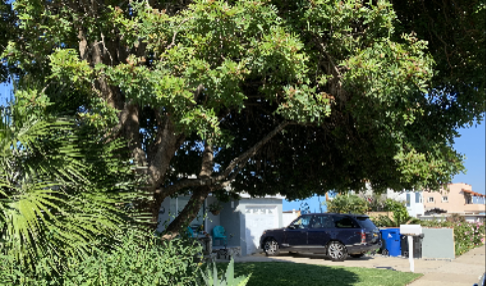
5. Irrigate slightly below the current root zone depth of your plants to encourage deep rooting into cooler soil: - 6”-8” for annuals, perennials, and turf - 8”- 1' for shrubs - 1' or deeper for trees
6. Water early in the morning when soil evaporation is minimal.
7. Control weeds. They compete with your garden plants for water.
8. Spread and maintain 2-4” of mulch around garden plants and trees (3-4” for wood chips, 2” for pebbles, decomposed gravel, etc.) keeping it a few inches away from tree trunks.
9. Avoid over-fertilizing. Too much nitrogen creates weak growth and the need for more water.
10. If you have a lawn and still want to keep it, water based on the UC ANR 'Lawn Watering Guide': http://ucanr.org/freepubs/docs/8044.pdf
Contact a trained University of California Cooperative Extension (UCCE) Master Gardener in San Bernardino County for more help! mgsanbern@ucanr.edu (fastest!) or: (909)387-2182 (leave a message for a return phone call)
Redlands trees
- Author: Janet Hartin
o you ever wonder if plants “communicate” with each other? If so, you're not alone. The research on this important and fascinating topic has increased dramatically in the last decade. My interest in it dates back decades to my graduate school thesis that involved how phenolic acids exuded by the roots of garden pea (Pisum sativum) accessions from around the world warded off weeds that would otherwise have crowded them out. This was an early form of biological weed control for sure! The seeds we studied were 20-30 years old and had been carefully stored and preserved in USDA facilities for research such as this.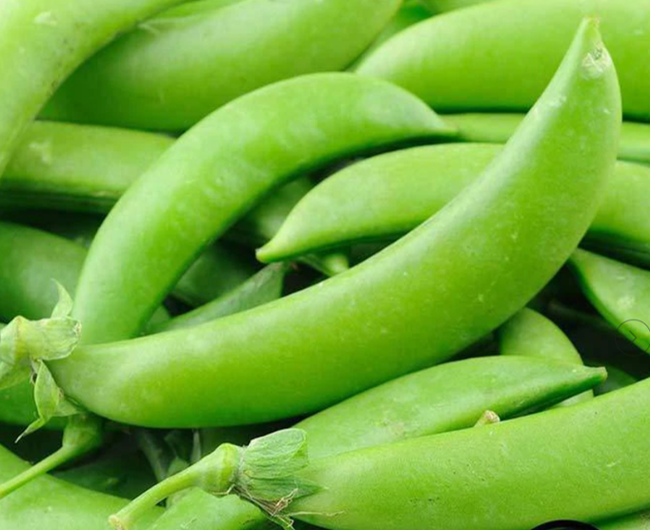
They were all non-hybrids that had unadulterated natural genetic qualities. While I am in no way suggesting that plant breeding isn't overall a positive advancement, there are instances where something is lost when something is gained, and genes are certainly no exception! Sometimes breeding for an improvement in one facet (production per acre, nutrition, etc.) results in the loss of another genetically controlled factors that may be negative or positive.
At about the same time I was pursuing my research described above at University of Minnesota, University of Washington zoologist David Rhoades demonstrated how some plants defend themselves against insect attacks by changing the nutritional and/or taste of their foliage. In turn, insects that otherwise would chow down on the tasty leaves look elsewhere for their lunch. Since then, research identifying the multiple paths that plants use to exchange information with neighboring plants (largely within their own species) and ward off herbivores (organisms feeding mostly on plants), diseases, and weeds has nearly tripled. While a lot of this chemical information exchange relates to the release of volatile organic compounds in the root zone and through the air, electrical signaling among plants also occurs.
Below are a few recent examples:
-Lima beans attacked by insects signaled nearby lima bean plants who built up defenses to avoid damage
-Lodgepole pines attacked by a beetle signaled neighboring trees who had time to prepare for attack.
While, traditionally, research identified these chemical warnings occurring only in neighboring plants of the same species, Cornell researchers discovered that sagebrush (Artemisia tridentata)with insect damage can release chemical signals recognized by wild tobacco (Nicotiana attenuata). In turn, the tobacco plants pump up their arsenal of chemical defenses to avoid damage. (Interestingly, the tobacco plants don't waste precious nitrogen and carbon on defense mechanisms until they are actually attacked since these elements need to be conserved as much as possible for future seed production.)
Ted Farmer's team at University of Lausanne, attached leaves of thale cress (Arabidopsis thaliana) with microelectrodes prior to infesting them with Egyptian cotton leafworms. Almost immediately, voltage changes radiated outward from the damaged leaf tissue in the damaged plant and other neighboring plants resulting in accumulation of jasmonic acid which reduced further damage. Genes responsible for transmitting the electrical signal create membrane channels inside cell walls that provide a conduit for charged ions. The genes in some ways parallel receptors that animals rely on to relay sensory signals through their bodies.
And last but certainly not least, Kudos to UC Davis ecologist/entomologist Richard “Rick” Karban, who was named a fellow of the Ecological Society of America (ESA) for “his innovative contributions to community and evolutionary ecology, especially through providing conceptual advances and rigorous experimental work on plant-insect interactions." Want to learn a log more about this topic." Still "hungry" for more information on this topic? You're in luck! Dr. Karban wrote a 240-page book entitled: Plant Sensing and Communication (University of Chicago Press).

